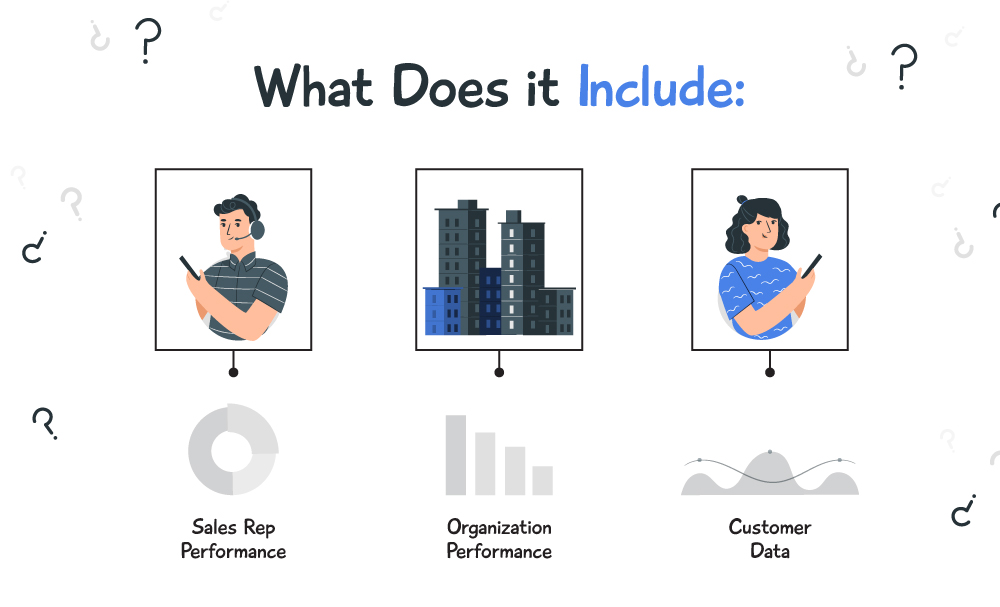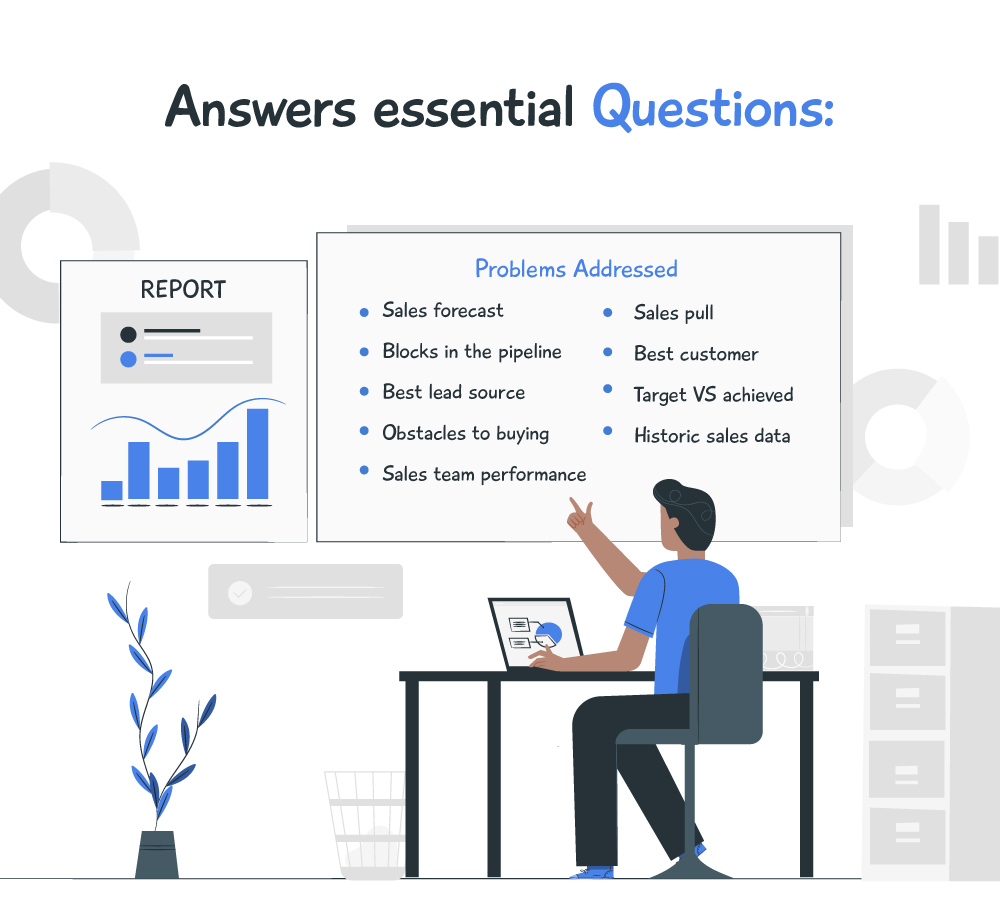There’s a lot more to growing your business than making sales. While you might see that money is coming in, the only way to know if you are making enough money and hitting your sales quotas is to track your sales each month. For this, you need to have a monthly sales report in place.

At least half of all sales teams believe that data is critical to making accurate forecasts and staying on target.
Breaking down your sales by specific periods will not only help you understand the deals you close but can also help you better plan for the future. Here’s what you need to know about creating a monthly sales report that can give you data-driven insights into your business.
What is the Purpose of a Monthly Sales Report?
Your monthly sales report should give you a breakdown of sales activity over a period of time. Details might include the stats and performance of individual sales reps and the sales organization as a whole, the number of new deals closed, the value of those deals, and the individual reps who hit or missed their sales quotas.
Additionally, your monthly sales report can give you deeper level insight, such as the cost of acquisition per customer, referral and lead sources, and customer value, among others.
The goal is to get a better understanding of sales organization activity by the month to see where you’re hitting targets and where you might be missing the mark. Using this data, you can discover gaps in performance and decide how to fill them.

Regardless of the size of your business or sales team, monthly sales reports can be a valuable component. The insights you receive can help you to optimize your sales process and fuel your growth strategy. Studies show that the most forward-thinking companies are using data, with the most high-performing sales teams using data to accurately forecast their sales cycles.
Some questions you need to ask yourself
When done correctly, a monthly sales report can help company leaders and managers answer some of their most pressing questions, including:
- Who are our best customers?
- Where do our most profitable leads come from?
- What encourages new customers to purchase?
- Are there obstacles that prevent customers from purchasing?
- How do this month’s sales compare to sales in previous months?
- Is our sales team on track to meet goals?
- Who are our top-performing sales reps and what are they doing differently than the others?
- Are there any clogs in the sales pipeline?
- What is our forecast for the upcoming sales period?
To answer these questions, sales organizations need an easy way to document every sale, every interaction, and every lead they receive and be able to turn that data into usable insights.
What’s Included in a Monthly Sales Report?
There are a lot of details that you could include in a monthly sales report, but following the less-is-more mentality may help you to get more out of it. This way, important data isn’t obscured by useless figures that mean very little to you and your sales organization.
Also, think about the specific metrics that play the most important roles in determining sales success. Once you understand what you hope to get from a monthly sales report, you can include these metrics and develop a plan on how to use them.

Here are some ideas to get you started:
Sales Rep Performance
- Target vs achieved
- Number of deals
- Average deal size
- Close rate
- Sales length cycle
- Revenue generated
- Sales activity, such as the number of phone calls made or emails sent
Sales Organization Performance
- Target vs achieved
- Number of deals
- Average deal size
- Close rate
- Sales length cycle
- Revenue generated
- Sales activity, such as the number of phone calls made or emails sent
Customer Data
- Number of new customers acquired
- Average customer value
- Lead or referral source
- Shared characteristics, such as industry
But, you don’t have to include all of the above in your monthly sales report, and you may find additional information to include. The most important thing to consider is how your monthly sales report data relates to your goals and can help you achieve greater company objectives.
How to Streamline Your Report Generation
Regardless of what you plan to include in a monthly sales report, it’s clear that tracking, collecting, and compiling so many individual pieces of data is nothing short of time-consuming. This is one reason why many sales organizations have adopted CRM software that can keep track of sales activity and compile data into a useful format at scale.
With a few clicks, you can create custom sales reports that reflect the data you’re most interested in seeing. Each report is taken from the data you collect in a given sales period, giving you accurate, up-to-date and sites that you can trust to use in your decision-making process.
LeadSquared is designed for sales teams to make the most of their data — see it in action by watching a free demo!






